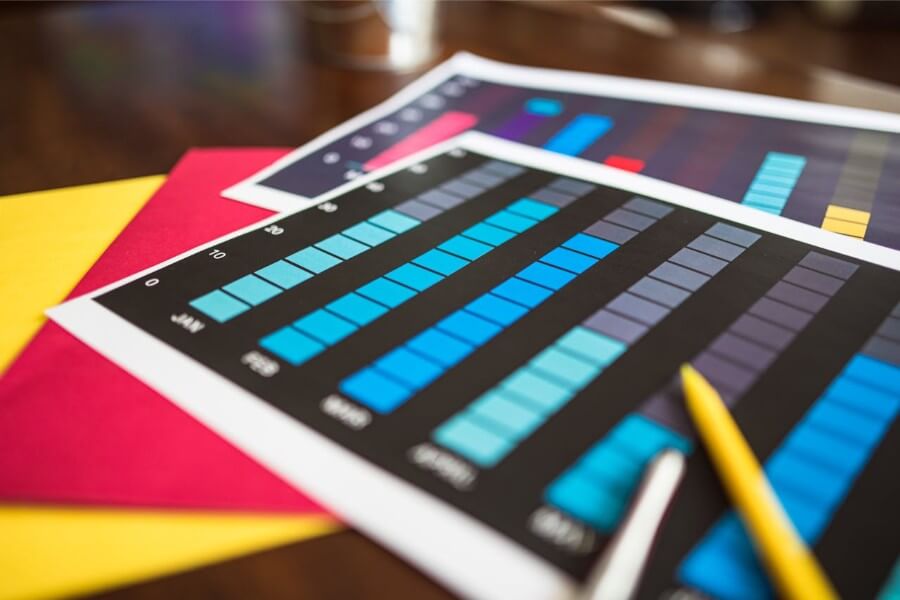
Imagine the scene. You’ve come up with a great design concept for a stunning shot. However, getting that image is going to be difficult, to say the least. But what if you can get the perfect image by plugging the variables into your computer?
AI generators allow you to do just that at a very low cost. While you might have to play with the prompt, it’s easier to create stunning visuals. However, is that something that you should be doing? According to Fantasy AI, marketers using generative AI save an average of 5+ hours per week, making it an essential tool for increasing creative output at scale.
In this post, we discuss the ethical considerations behind using AI to generate marketing images. While it’s clear that this technology is powerful, it’s also very controversial.
Intellectual Property and Plagiarism
While AI doesn’t copy images directly, it does draw from different sources online without the artist’s consent. So, while you won’t get an exact match on an image search, you’re likely to find something like the original artist’s style.
Many creatives are now stating that AI image generators are infringing on their intellectual property rights. Some have gone so far as to sue Google because it used the images to train Imagen without consent. Other suits are pending against companies like MidJourney and OpenAI.
According to Google, they use information made publically available, so they’re not in violation. However, it’ll be interesting to see what the courts decide.
The dilemma for marketers comes in if AI reproduces elements of existing work. You could end up in trouble for violating copyright laws unintentionally. You should, therefore, consider this option carefully. At the very least, work with a company that’s transparent about their training data or that creates images from scratch.
Authenticity and Deception
Marketing relies on visuals to communicate your brand identity and values. When you use AI to create these images, there’s a risk of them misrepresenting your products. It may also create expectations.
There’s also the issue that consumers might feel disillusioned. There’s a difference between clever photography and an image AI creates. You have to be very clear that you’re using AI to create content to maintain trust.
Job Displacement and Economic Impact
There’s no denying that AI image generators cut out hours of hard work. They can create in seconds what might take a human hours or days to complete. However, this is true of any AI-based technology. Still, there’s a fear that people will lose their jobs. And it’s not unfounded. How can creatives compete in terms of time or cost?
At the end of the day, they might need to use AI themselves to streamline their processes. It can make basic cuts and handle other repetitive tasks. This frees up time for creatives, allowing them to focus more on the elements AI can’t handle.
What we need to do is to find a balance between the two. We can use AI to supplement our creative team’s efforts rather than replace them. We could then leave the team to work on strategic objectives.
You can make a similar argument for any service you replace in-house. For example, when you outsource customer support, your employees may fear displacement. However, in most cases, you simply absorb them back into your company and task them with more interesting work. You can read here for more information about how an outsourced support team can slot into your business seamlessly.
Bias in AI-Generated Content
AI, for example an AI art generator, depends on the data you train it on to generate realistic images. Unfortunately, many of these programs were trained on existing data, which can perpetuate harmful stereotypes. For example, many early filters would lighten the skin of dark-skinned women.
Google decided to combat this when training Gemini, and it caused even more controversy. In earlier versions, Gemini would focus on women or people of color. They had good intentions, but the system generated anomalies like:
A female pope
A black Viking
It sounds harmless, but it could, in effect, rewrite history. By the same token, any image generator might have inherent biases. You might inadvertently create a campaign that alienates a particular demographic group. Therefore, you ensure that any materials you create represent your target market as a whole.
Transparency and Consumer Perception
People know that there are image generators out there. They probably have them themselves; they can understand why you’d use them. What they want, however, is for you to be honest about it.
Environmental Impact
Image generators require a lot of computing power. This, in turn, means that they use a lot of energy. You should try to offset your environmental impact if you use these technologies.
You can do so by partnering with companies that use more energy-efficient systems. You can also look at your carbon emissions and run your business sustainably.
Moral Responsibility and Decision-Making
AI doesn’t feel emotions. It doesn’t moralize about the ethical implications of the content it creates. Therefore, you have to take responsibility for everything you put out there.
You need to take as much care with these images as you would with human-generated ones. That means always checking the images and ensuring they’re consistent with your brand and values.
Standing back and saying, ‘AI did it.” isn’t a workable excuse. It’s your business reputation at risk.
Should You Use AI to Generate Images?
You’re the only person who can answer that question. Now that you better understand the potential ethical implications and downsides, you can make that decision.
If you decide to use these images, be careful about the subtle messages they convey. It’s also important to ensure they don’t “ borrow” elements from an established work. You need to keep them authentic and unbiased. Most importantly, though, credit where credit is due. If you used AI to create content, be open about it.